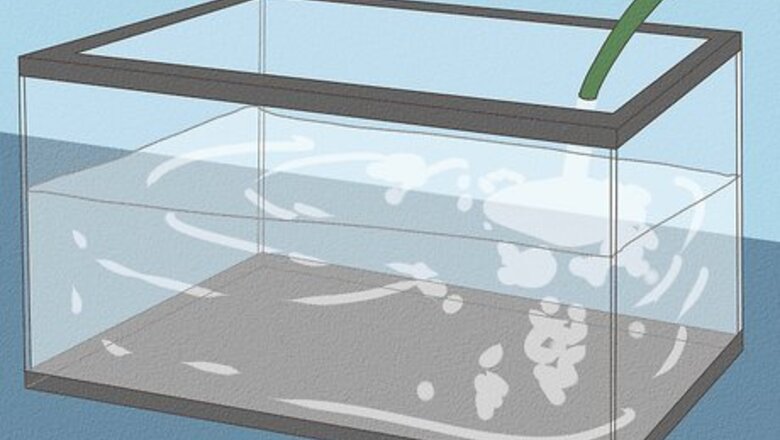
views
Creating the Right Environment
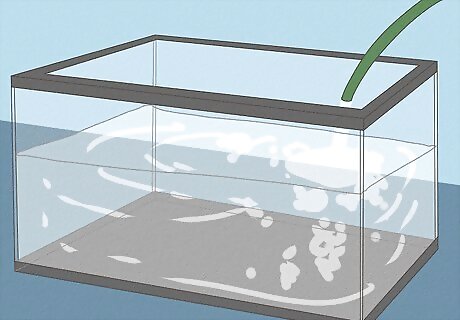
Set up the tank. A 10-gallon (38 liter) tank can work for a single axolotl. However, bigger is generally better when it comes to an axolotl. Opt for the biggest tank you can fit into your home. A 20-gallon (76 liter) tank is a good size for an axolotl. Fill the aquarium with water completely, the way you would fill it for fish. Tap water is safe to use if you condition it as you would for a freshwater fish tank. If you do not condition the water, chlorine and other chemicals in the water can harm or kill your axolotls. Keep a lid on the aquarium at all times. Axolotls will sometimes jump out of their tanks. Make sure to provide your axolotl with an appropriate hiding place. Anything that provides shelter makes a good place for axolotls during the day. You can use flower pots, hollow decorations, or a safely stacked rock cave.
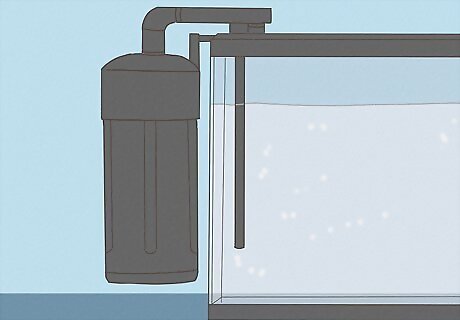
Install an external canister filter. An external canister filter is necessary to keep your axolotl’s water clean and healthy. You can purchase this type of filter at a local pet store. Any filter you install should have a spray bar or other outlet to control water flow. While axolotls need subtle water flow, they are stressed by actively flowing water. Exposure to strong water flow may cause them to stop eating or develop stress-related health problems.
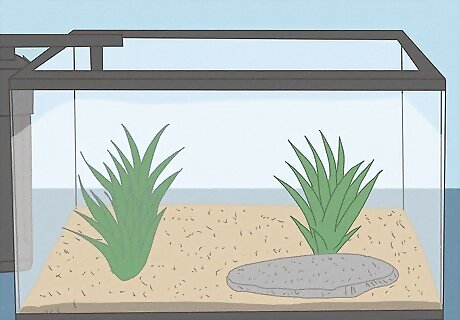
Provide substrate. Substrate is material that lines the bottom of an aquarium. The bottom of an axolotl tank should be lined with large fish tank pebbles (larger than the axolotl's head) or fine sand (fine grain sand being the ideal substrate). Do not use small pellets or rough sand (such as blasting sand). An axolotl may accidentally ingest such substances.
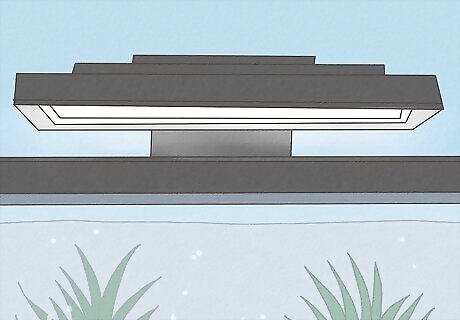
Keep lighting minimal. You do not need to provide lighting for an axolotl the same way you would for a fish tank. Bright lighting may actually cause an axolotl to feel distressed, so opt for a plant light if you add a light at all. Axolotls do not need a lot of light to thrive, so lighting is usually so you can see the animal rather than for the axolotl’s benefit. Minimize how often you keep the light on. Lights can generate excess heat, which can be bad for an axolotl. Turn it off when you are not feeding or viewing the axolotl.
Keeping Your Axolotl Healthy
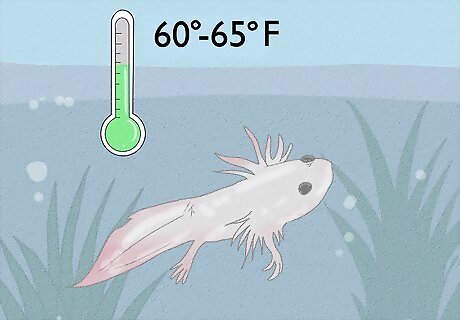
Maintain the right temperature. Axolotls are cold-blooded animals, so you do not need a heater, though if your house is kept at a warmer temp, you may need an aquarium chiller. The proper temperature for an axolotl hovers between 60° and 65° Fahrenheit (approximately 16°-21° Celsius). Make sure to adjust the temperature of the room that contains the tank if you live in an area prone to extreme heat or cold. You may need to keep an air conditioner or heater in the room during some months. Axolotls exposed to temperatures above 74° F (23° C) will develop heat stress. If your tank is prone to overheating, purchase a tank cooler.
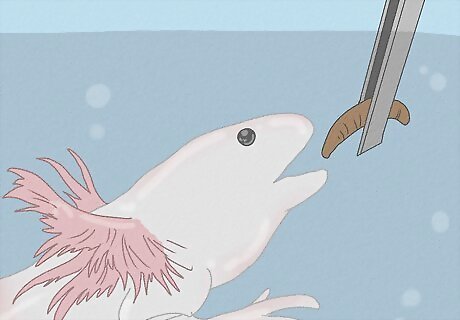
Feed your axolotl a proper diet. You can buy night crawlers and frozen bloodworms at a local pet store or feed them earthworms from pesticide-free soil. These should be the staples of your axolotl's diet. Only pellets will not provide your Axolotl with enough nutrition. You can also occasionally provide frozen shrimp and bits of chicken for a treat. Avoid live fish as food due to parasites. Feed your axolotl every other day for half an hour. Provide the axolotl with as much food as it can eat in a half hour time frame.
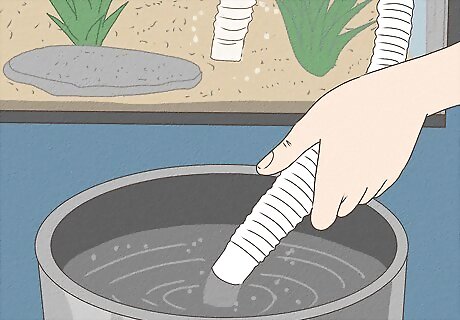
Change the water regularly. Once a week, remove 50 to 60% of the water from the tank. Then, replace it with fresh water. Tap water is safe to use if you condition the water and have a filtration system in place.
Maintaining Your Axolotl's Safety
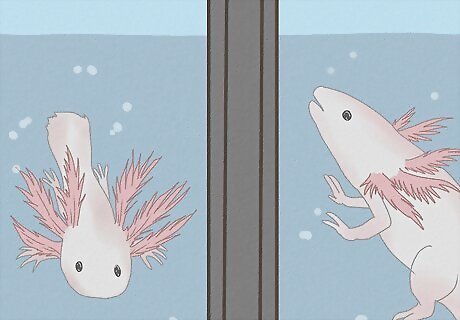
Separate young and old axolotls. If your axolotls breed, remove the babies from the tank using a net and place them in a separate aquarium. Older axolotls may prey on younger ones, so it's not safe to keep axolotls of different ages in a tank together.
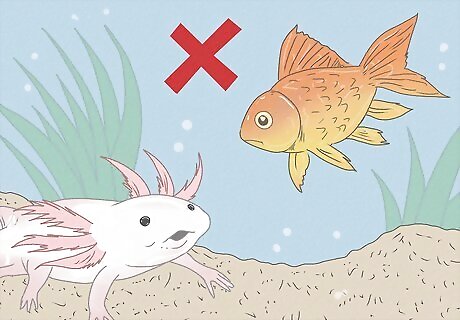
Do not place other animals in an axolotl tank. Axolotls are best kept in their own tank, but occasionally can do well with another axolotl of a similar size and age. However, they will prey on other types of fish or marine life. In general, an axolotl tank should only contain axolotls.
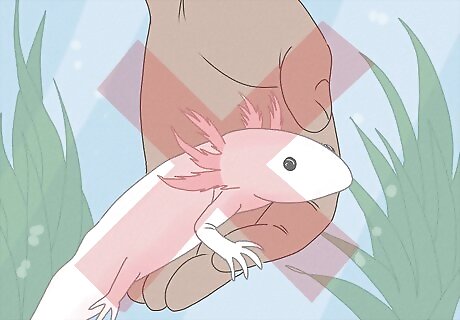
Refrain from handling axolotls. Axolotls are not people-friendly pets. They do not need human contact to be happy and, in fact, this may stress them out. Only handle an axolotl when necessary, such as when removing babies from a tank. Axolotls may also nip if handled.














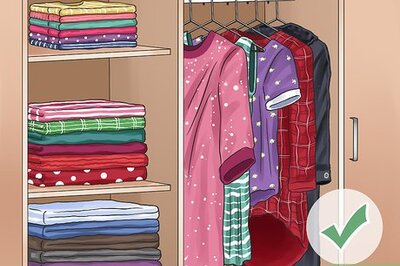


Comments
0 comment